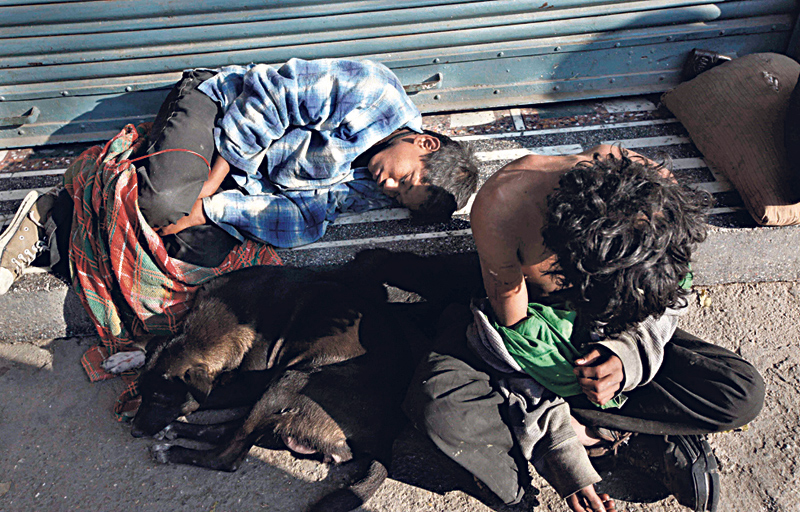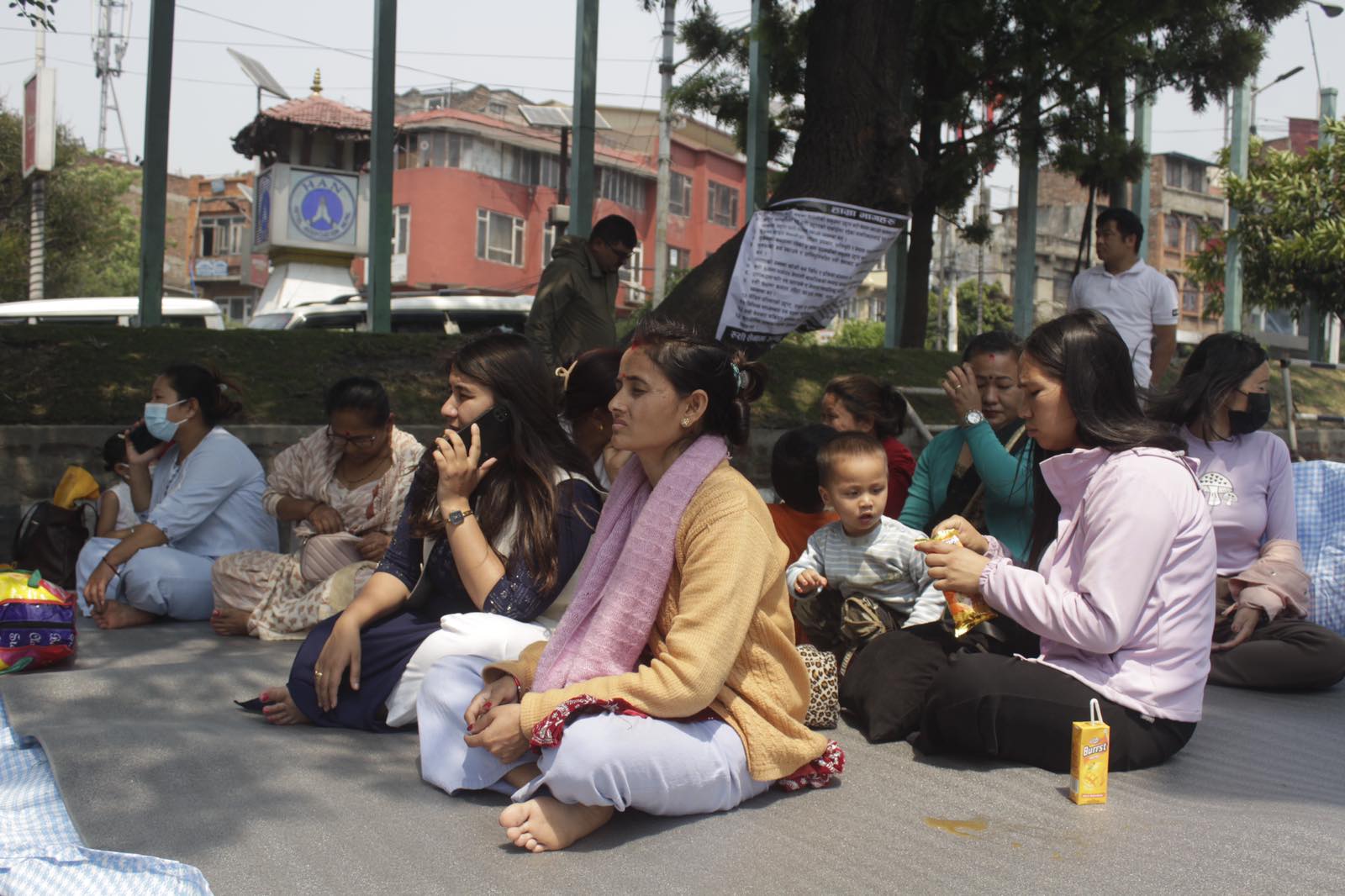
OR
The need to rehabilitate street children
Published On: June 25, 2016 12:00 PM NPT By: Sourabh Dhungana

Street children, often referred to as ‘Khate,’ are those vulnerable groups of children who are living under destitute situation trapped in mired poverty and excluded from the ‘civilized’ section of society alleged of being ineligible to adjust in the circumstances of civilization.
In other terms, they are victims of social rejection who face gross violation of their human rights in the form of verbal abuse, violence, sexual exploitation and abuse as well as luring them into the vicious circle of crimes and hard drugs distribution and consumption.
We often make the mistake of viewing all street children from the same lens, but there are different categories among them. According to UNICEF, they can be distinguished in two categories: ‘Children on the streets,’ and ‘Children of the streets.’
‘Children on the streets’ are engaged in economic activities from selling to begging; they aren’t essentially abandoned and in fact return home at the end of day and share their income with their family members. But ‘Children of the streets’ are those who live on the streets outside of their family environment. They do not live under the supervision of their families but may visit their families ‘occasionally.’
There are several factors that lead a child to live the rest of his/her life on the streets of major cities. In the context of Nepal, the probability for a child to be excluded and left behind by family increases in the climate of frequent derailed peace practices and armed conflicts to prevent further economic hardships.

Similarly, many children run away from their families to escape violence and abuses. Some are ‘bought’ from rural villages of Nepal for household chores and end up on streets because of torture, long working hours and almost no pay from their house owners. Among the street children of Kathmandu, following data indicates the cause for their street life:
According to Child Protection Center and Services (CPCS) report 2012, there are around 5,000 street children in Nepal, about 1,500 of who are estimated to be on the streets of the Capital. The problems they undergo are beyond imagination of a normal person who lives within the safe walls of their homes.
From a very early age, they need to struggle through all physical, psychological and social problems that an individual may not have to face during his entire lifetime. To start with, they don’t have enough to eat, resulting in malnutrition. They literally live on the streets, which puts them at risk of different types of abuses.
Majority of them are into substance abuse, often smoking weed and sniffing glue from as early as six years old.
Besides physical impacts, these children also suffer from deep psychological distress. They not only find it hard to move on from their stressful past, but also start preferring transitory lifestyle and unlearn all social norms and values indoctrinated during their early childhood if any. Besides, members of the “haves” class socially exclude them, categorizing them as “those who create troubles.”
The government as well as other national and international organizations has been working to address the issue of street children, but not all their efforts have been fruitful. As a result, there hasn’t been any significant decrease in the number of street children. Lack of adequate funding to rehabilitate and relocate them is one of the major issues because since these children have adopted the “street lifestyle,” they find it very difficult to socialize in a “normal” environment.
Their tendency to come back to their old lifestyle is extremely high. There are plenty of cases where street children willingly or secretly move out of rehabilitation homes in search of drugs, old peer group and ‘freedom.’ It is also difficult for people to accept street children as part of their society even when they are willing to integrate and start life anew.
The main question still remains unanswered: What can we do to provide street children a better life?
First of all, we must change our attitude towards them. A good behavior or even a polite rejection can boost their social spirit. If we are not able to help, at least let’s not hurt. We need to alert policymakers to address the issues of street children as early as possible and take rational initiations of rehabilitating them.
Pressurizing for the practice of transparency among organizations working for street children can ensure that the money from donor agencies reaches these children. We cannot expect an overnight change but we can each act responsibly and expect a better future for them.
Sourabh is an undergraduate student of Development Studies at National College in Baluwatar, Kathmandu.
You May Like This

Underage pregnancy, abortion in street children a health concern
KATHMANDU, Aug 1: Five years ago, twelve years old Rina Dahal (name changed) of Dhading ran away from home and... Read More...

Street children vulnerable to addiction
KATHMANDU, March 14: As most of the street children start using psychoactive substances at a tender age of eight or nine,... Read More...

CCWB rescues 200 street children
KATHMANDU, July 23: As part of the government's plan to rescue and rehabilitate street children, the Central Child Welfare Board... Read More...

Just In
- Govt padlocks Nepal Scouts’ property illegally occupied by NC lawmaker Deepak Khadka
- FWEAN meets with President Paudel to solicit support for women entrepreneurship
- Koshi provincial assembly passes resolution motion calling for special session by majority votes
- Court extends detention of Dipesh Pun after his failure to submit bail amount
- G Motors unveils Skywell Premium Luxury EV SUV with 620 km range
- Speaker Ghimire administers oath of office and Secrecy to JSP lawmaker Khan
- In Pictures: Families of Nepalis in Russian Army begin hunger strike
- New book by Ambassador K V Rajan and Atul K Thakur explores complexities of India-Nepal relations














_20240419161455.jpg)


Leave A Comment